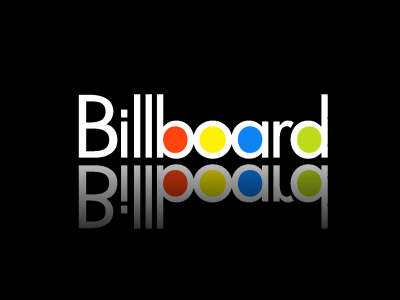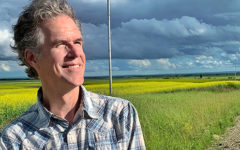
 What do Alison Krauss, comedian/actor/novelist/art buff Steve Martin, classical cellist Yo-Yo Ma, classic rocker Tommy Shaw, and country star Dierks Bentley have in common?
What do Alison Krauss, comedian/actor/novelist/art buff Steve Martin, classical cellist Yo-Yo Ma, classic rocker Tommy Shaw, and country star Dierks Bentley have in common?
And what does that list have in common with Trampled by Turtles, Steve Ivey, Dr. Elmo (he of Grandma Got Run Over by a Reindeer fame), the Devil Makes Three, Old Man Markley, the Wailin’ Jennys, and the Carolina Chocolate Drops?
They all have at least one album—in the case of Ivey, of whom I was not previously aware, three albums—on Billboard’s top 50 bluegrass albums of 2011.
“Top bluegrass albums will be inclusive of the broad range of styles that represent the genre, from its deeply revered traditions to its modern, progressive elements,” said Billboard’s Wade Jessen in 2002 when he began curating the chart. Almost a decade later Billboard has stuck to its big-tent approach.
Not that there’s anything wrong with that.
And there’s not much point going into the What Is Bluegrass Anyway? argument that bluegrass music fans can’t help but get bogged down in. (For the record, I’m as reactionary as it comes in that debate. Well-chosen words and precise labels are essential for clear thought, and the historical record shows us clearly what bluegrass in fact is. But I said I wasn’t going into all that.)
The Billboard list is for those in the music industry, and therefore it tells us what acts are trying to associate themselves with the “deeply revered traditions” of a musical form created in living memory.
It’s hard to imagine anyone in the music business wanting to associate with what used to be associated with the scary kid from the movie Deliverance (Another side note: James Dickey’s novel on which the film is based is a great piece of writing.) But O Brother, Where Art Thou? changed all that.
Though the soundtrack to the charming film by the quirky Coen brothers itself contains very little, if any, true bluegrass music, it did replace deformed-banjo-picker-kid’s face with that of George Clooney’s in the public consciousness. It raced up the Billboard charts, pop and country, in the time following 9/11 when the public was ready for something warm, authentic and American. And of course it had great songs played by great musicians, many of whom had at least one foot in the bluegrass camp. (By the way, the O Brother soundtrack is on this year’s list at number 25.)
Alison Krauss and Union Station and Sarah Jarosz are certainly much closer to bluegrass, there are a few good bluegrass tracks on the Dierks Bentley project, and the Carolina Chocolate Drops play mostly old-time, a direct ancestor to bluegrass, giving them all a stronger claim for inclusion than the likes of Trampled by Turtles, Old Man Markley and the Devil Makes Three.
I wasn’t very familiar with that trio of names until now—they are all somewhat interesting bands you’d be happy to run across in a bar some random night—but their general instrumentation and arrangements are much more similar to acts like the Avett Brothers and Mumford & Sons who chart on the pop and folk lists. The Wailin’ Jennys, Abigail Washburn, the Farewell Drifters and the Greencards also seem to be a much better fit on the folk side.
I’m just not sure who is served by including bands like this on a list with acts like Blue Highway, the Grascals, the Isaacs, Ricky Skaggs, Rhonda Vincent and Ralph Stanley.
Again, maybe the folk-rock set is just trying to snag bluegrass music fans, who after all tend to be more discerning, educated, affluent and loyal than the general music consumer.
But the real point is that any list dedicated to album sales is behind the times. People simply don’t consume music in 12-track chunks, whether burned onto plastic or downloaded through the ether—like they did when bands like Tommy Shaw’s Styx were moving millions of units and selling out basketball arenas and football stadiums.
The change in music consumer preference brought on by amazing gadgets, cheap bandwidth, social networking and media decentralization means that, to build a career, artists will need to create intimate, meaningful experiences and products to go with their music, things like special-edition vinyl LPs, video chats, and frequent touring to great venues.
Bluegrass musicians, who with their shake-and-howdy-sign-a-CD-pose-for-a-picture routines already know more than one way to reach their fans personally, are well-poised to lead the way into an uncharted future.







